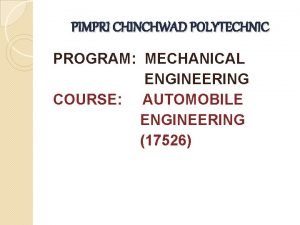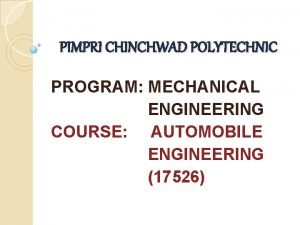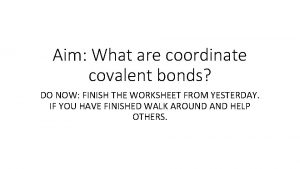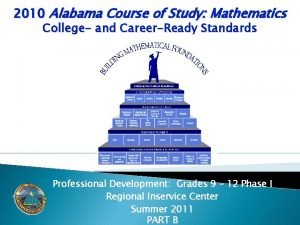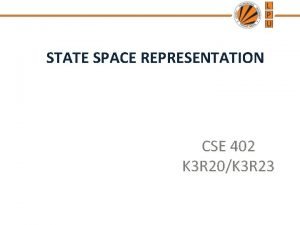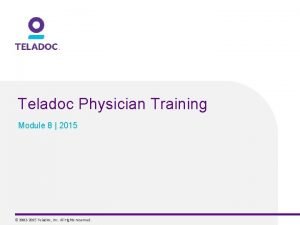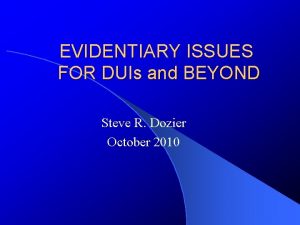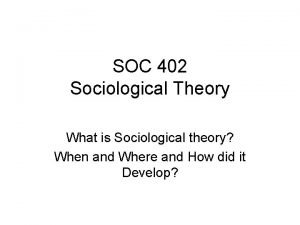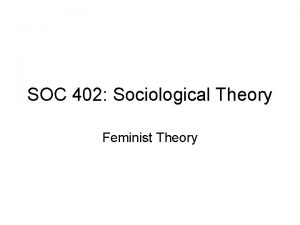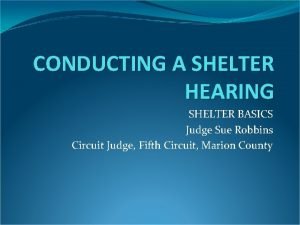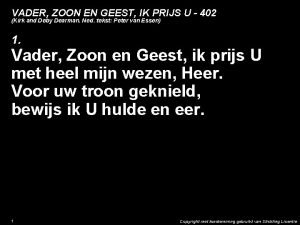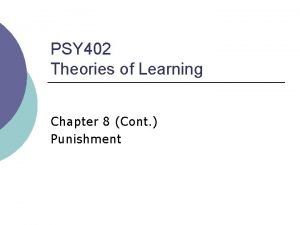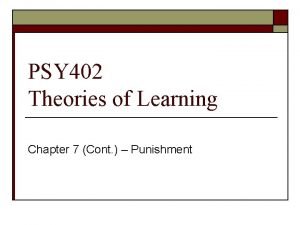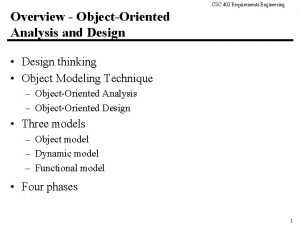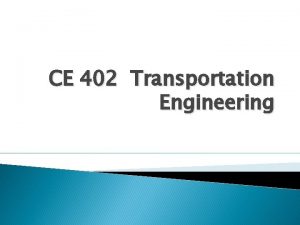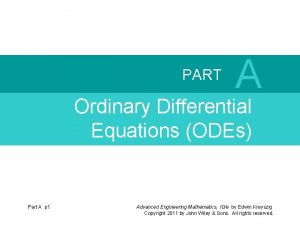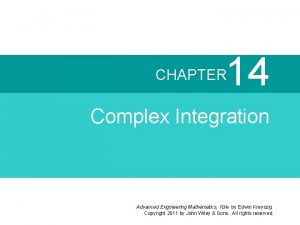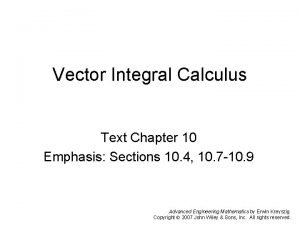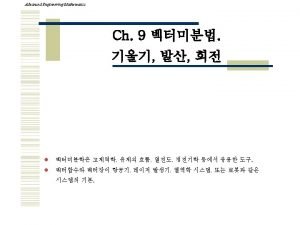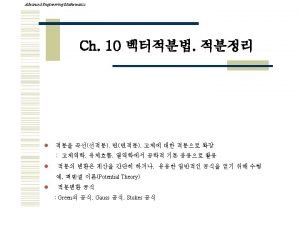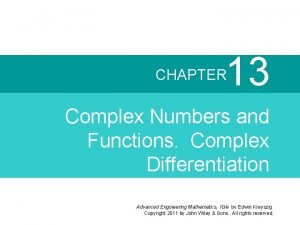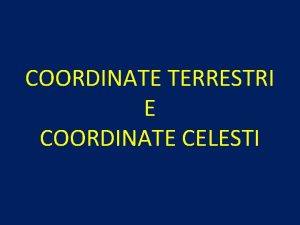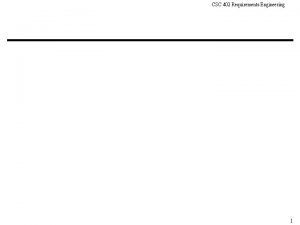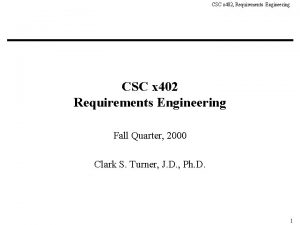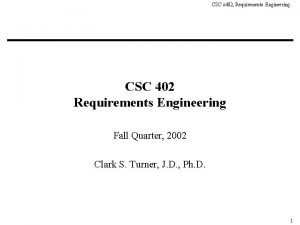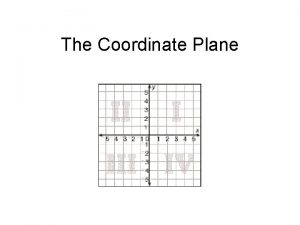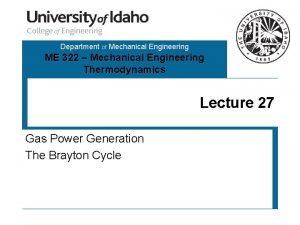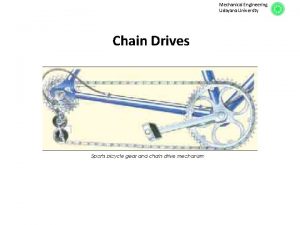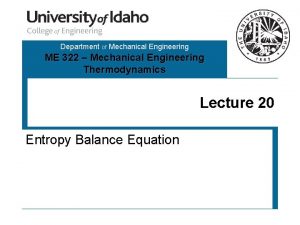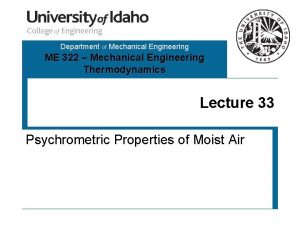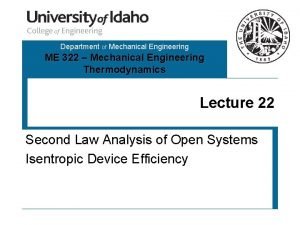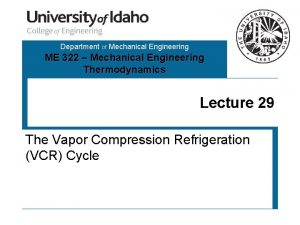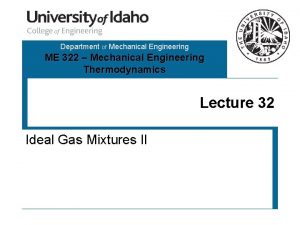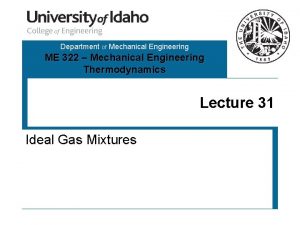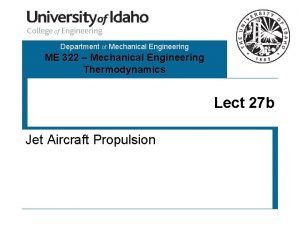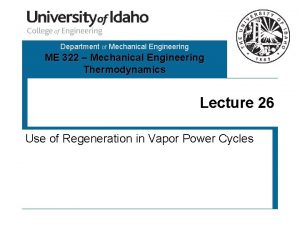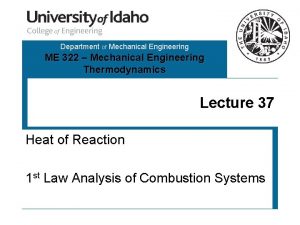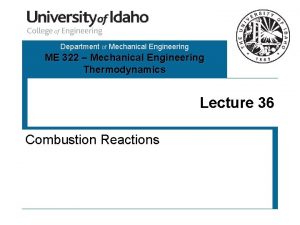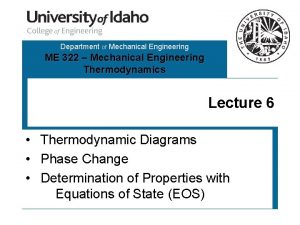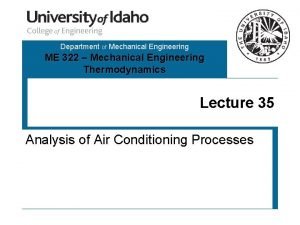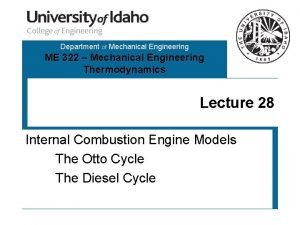MA 402 Mathematics for Mechanical Engineering Course Coordinate






































- Slides: 38

MA 402 Mathematics for Mechanical Engineering Course Coordinate: Prof. Dhara Patel Involved Faculty: Prof. Saket Jha Complied by Dhara Patel

Syllabus Ø Fourier Series Ø Ordinary Differential Equation Ø Partial Differential Equation Ø Laplace Transformation Ø Numerical Methods

What are the applications of MA 402 in Mechanical Engineering ?

Ø Vibration Ø Deflection of Beam Ø Solution of Heat, wave, Laplace equations Ø Solution of Ordinary and Partial equations Ø Electrical Circuits

Vibrations: # Classification of Vibration: Vibration can be classified in several ways. Some of the Important classifications are as follows. Ø Free and Forced Vibration Ø Undamped and Damped Vibration Ø Linear and Nonlinear Vibration Ø Deterministic and Random Vibration

Free and Forced Vibration Ø Free Vibration: If a system, after an initial disturbance, is left to vibrate on its own, the ensuing vibration is known as free vibration. No external force acts on the system. The oscillation of a simple pendulum is an example of free vibration. Ø Forced Vibration: If a system is subjected to an external force (often, a repeating type of force), the resulting vibration is known as forced vibration. The oscillation that arises in machines such as diesel engines is an example of forced vibration.

If the frequency of the external force coincides with one of the natural frequencies of the system, a condition known as resonance occurs, and the system undergoes dangerously large oscillations. Failures of such structures as buildings, bridges, turbines, and airplane wings have been associated with the occurrence of resonance.

Undamped and Damped Vibration : Ø If no energy is lost or dissipated in friction or other resistance during oscillation, the vibration is known as undamped vibration. Ø If any energy is lost in this way, however, it is called damped vibration. Ø In many physical systems, the amount of damping is so small that it can be disregarded for most engineering purposes. However, consideration of damping becomes extremely important in analyzing vibratory systems near resonance.

Linear and Nonlinear Vibration: Ø If all the basic components of a vibratory system the spring, the mass, and the damper behave linearly, the resulting vibration is known as linear vibration. Ø If, however, any of the basic components behave nonlinearly, the vibration is called nonlinear vibration. Ø The differential equations that govern the behavior of linear and nonlinear vibratory systems are linear and nonlinear, respectively. If the vibration is linear, the principle of superposition holds, and the mathematical techniques of analysis are well developed.

Ø For nonlinear vibration, the superposition principle is not valid, and techniques of analysis are less well known. Since all vibratory systems tend to behave nonlinearly with increasing amplitude of oscillation, a knowledge of nonlinear vibration is desirable in dealing with practical vibratory systems.

Deterministic and Random Vibration: Ø If the value or magnitude of the excitation (force or motion) acting on a vibratory system is known at any given time, the excitation is called deterministic. The resulting vibration is known as deterministic vibration. Ø Vibration In some cases, the excitation is nondeterministic or random; the value of the excitation at a given time cannot be predicted. In these cases, a large collection of records of the excitation may exhibit some statistical regularity. It is possible to estimate averages such as the mean and mean square values of the excitation.

Ø Examples of random excitations are wind velocity, road roughness, and ground motion during earthquakes. Ø If the excitation is random, the resulting vibration is called random vibration. In this case the vibratory response of the system is also random; it can be described only in terms of statistical quantities. Ø Below figure shows examples of deterministic and random excitations.





















Mathematical Model of a Motorcycle Ø Below figure show a motorcycle with a rider. Develop a sequence of three mathematical models of the system for investigating vibration in the vertical direction. Consider the elasticity of the tires, elasticity and damping of the struts (in the vertical direction), masses of the wheels, and elasticity, damping, and mass of the rider. Ø Solution: We start with the simplest model and refine it gradually. When the equivalent values of the mass, stiffness, and damping of the system are used, we obtain a single-degree-of-freedom model.





Thank You
 Mechanical engineering course
Mechanical engineering course Mechanical engineering course
Mechanical engineering course Post-and pre-coordinate indexing techniques
Post-and pre-coordinate indexing techniques Is co a covalent bond
Is co a covalent bond Alabama course of study math
Alabama course of study math Cse 402
Cse 402 Multithread chain stitch
Multithread chain stitch Isae 402
Isae 402 Ist 402
Ist 402 Ist 402
Ist 402 888-402-6916
888-402-6916 Tca 55-9-402
Tca 55-9-402 Ist 402
Ist 402 Quantas prendas faltam para a turma 401 empatar com a 402
Quantas prendas faltam para a turma 401 empatar com a 402 Soc 402
Soc 402 Soc 402
Soc 402 Novacat 402
Novacat 402 Ist 402
Ist 402 Test av kontroller revisjon
Test av kontroller revisjon Dev-402
Dev-402 402
402 Ist 402
Ist 402 U 402
U 402 English 402
English 402 402
402 Cont 402
Cont 402 Cont 402
Cont 402 What is the unexpressed subject in imperative sentences
What is the unexpressed subject in imperative sentences Technological determinism
Technological determinism Ist 402
Ist 402 Csc402
Csc402 Ce 402
Ce 402 Actual mechanical advantage vs ideal mechanical advantage
Actual mechanical advantage vs ideal mechanical advantage Higher engineering mathematics
Higher engineering mathematics Engineering mathematics
Engineering mathematics Engineering mathematics
Engineering mathematics Engineering mathematics
Engineering mathematics Engineering mathematics
Engineering mathematics Complex derivative
Complex derivative
